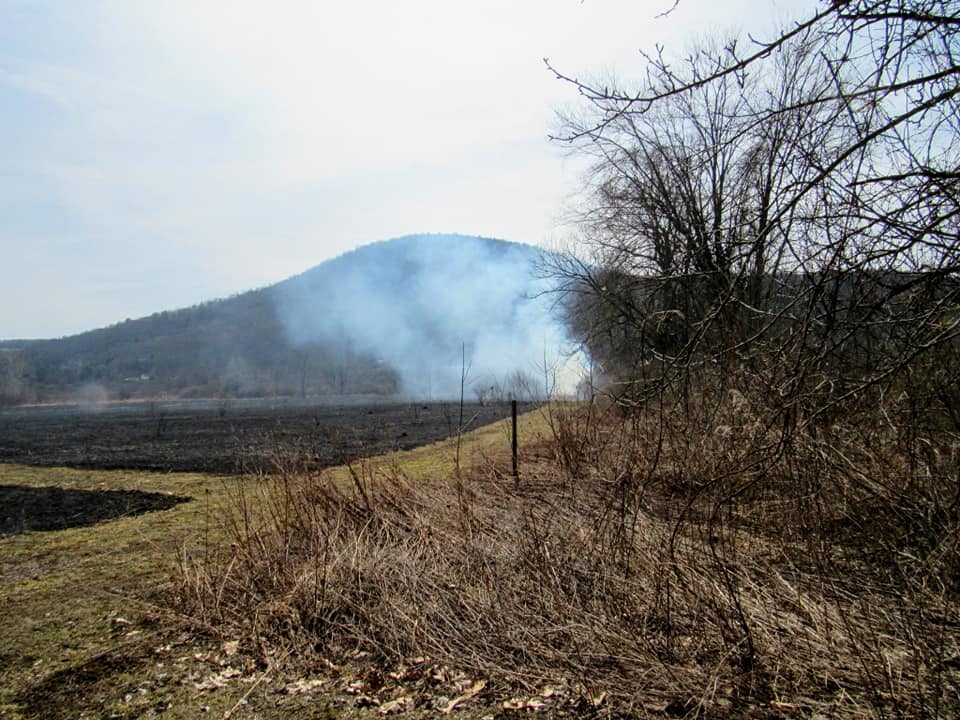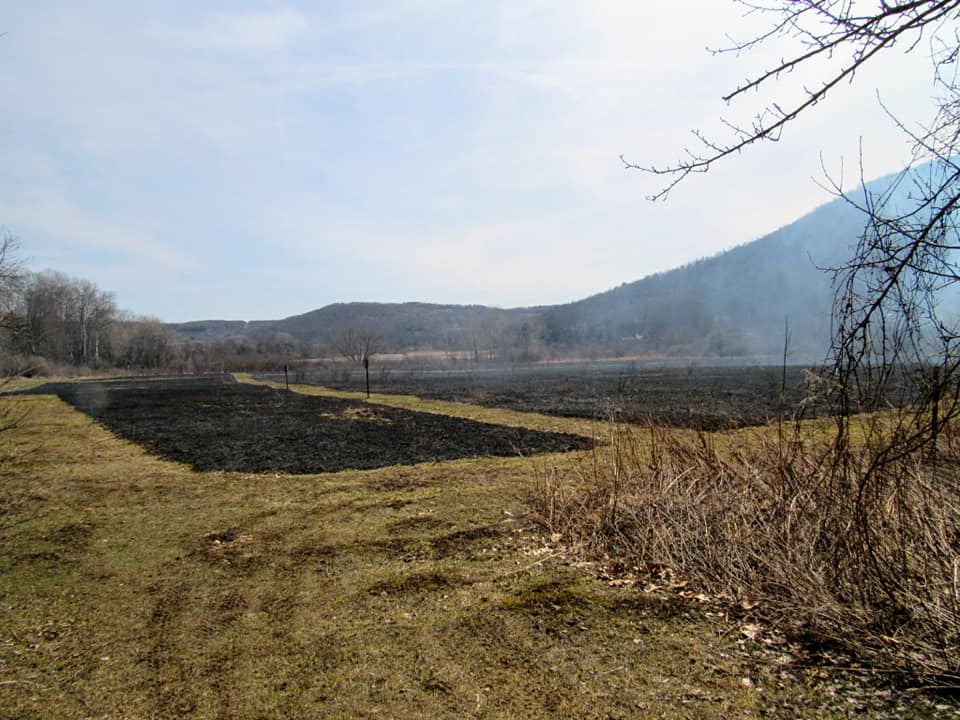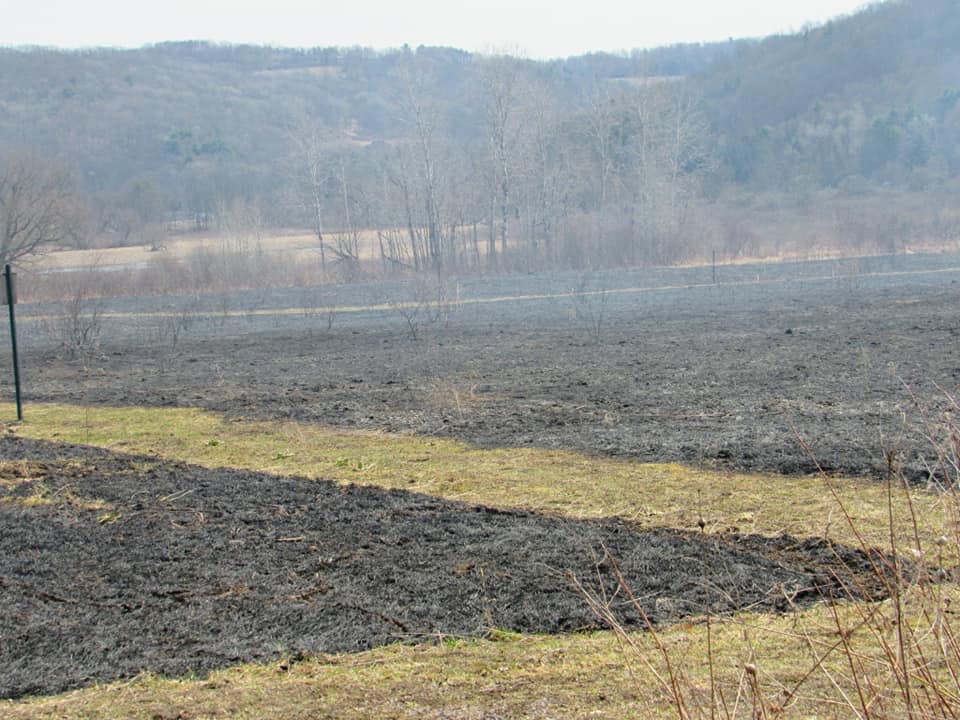When you support NPC’s conservation efforts, you’re helping to conserve not just land—but the future of that land, too. One recent example of ongoing stewardship comes from the Cavanaugh Access Area, where state land managers are using science-based techniques to care for the landscape.
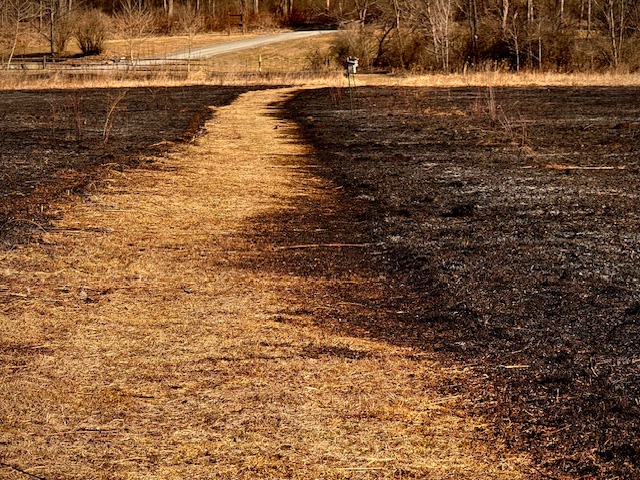
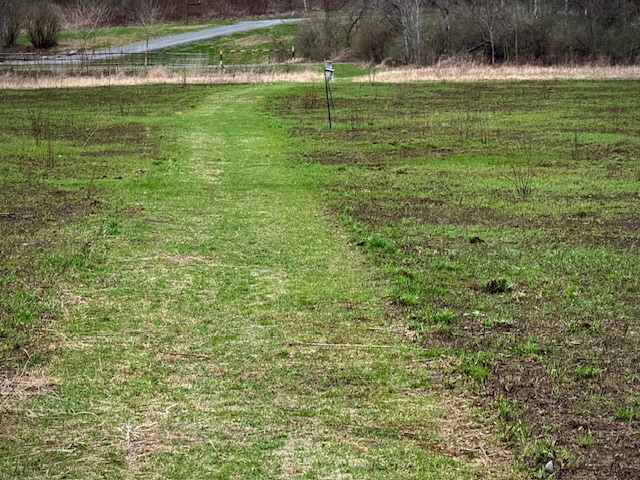
In March, the Bureau of Forestry conducted a prescribed fire at the Cavanaugh Access Area, located in the Marsh Creek section of the Pine Creek Rail Trail (parallel to Route 6 outside of Wellsboro). This controlled burn was carefully planned and managed by trained staff.
Prescribed fire is a vital tool used to:
- Control invasive plant species
- Encourage the growth of young trees
- Restore native plants
- Reduce the risk of more dangerous wildfires
If you’re in the area, consider stopping by to see the difference. Look closely at the vegetation in the burned area compared to neighboring sections that weren’t part of the fire. You’ll see the young shoots already starting to emerge—signs of a healthy, regenerating ecosystem.

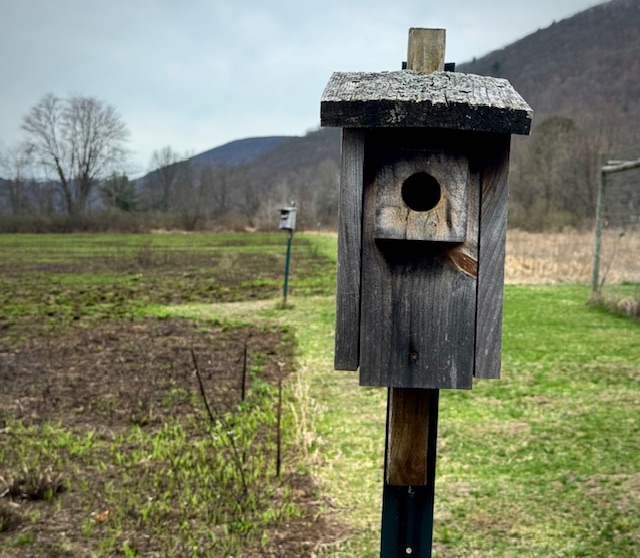
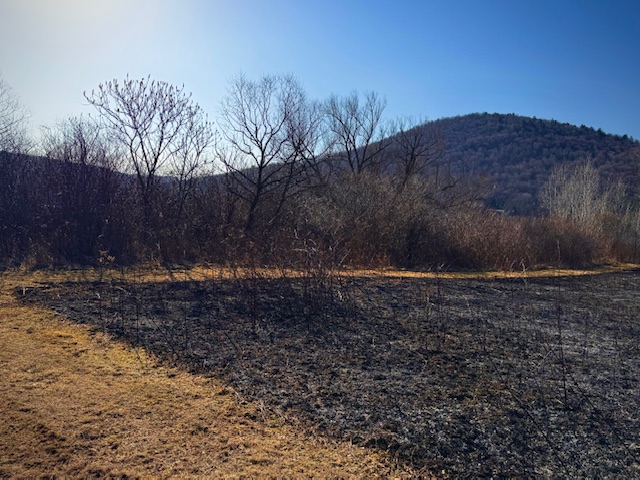



Thanks to your support, places like Cavanaugh Access remain part of a thriving and resilient landscape.

Thank you to Nancy McCaughey for providing all of the photos.


